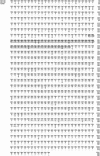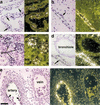Dll4, a novel Notch ligand expressed in arterial endothelium
- PMID: 10837024
- PMCID: PMC316657
Dll4, a novel Notch ligand expressed in arterial endothelium
Abstract
We report the cloning and characterization of a new member of the Delta family of Notch ligands, which we have named Dll4. Like other Delta genes, Dll4 is predicted to encode a membrane-bound ligand, characterized by an extracellular region containing several EGF-like domains and a DSL domain required for receptor binding. In situ analysis reveals a highly selective expression pattern of Dll4 within the vascular endothelium. The activity and expression of Dll4 and the known actions of other members of this family suggest a role for Dll4 in the control of endothelial cell biology.
Figures






References
-
- Artavanis-Tsakonas S, Rand MD, Lake RJ. Notch Signaling: Cell fate control and signal integration in development. Science. 1999;284:770–776. - PubMed
-
- Bettenhausen B, Hrabe de Angelis M, Simon D, Guenet JL, Gossler A. Transient and restricted expression during mouse embryogenesis of Dll1, a murine gene closely related to Drosophila Delta. Development. 1995;121:2407–2418. - PubMed
-
- Chitnis A, Henrique D, Lewis J, Ish-Horowicz D, Kintner C. Primary neurogenesis in Xenopus embryos regulated by a homologue of the Drosophila neurogenic gene Delta. Nature. 1995;375:761–766. - PubMed
-
- Coffman CR, Skoglund P, Harris WA, Kintner CR. Expression of an extracellular deletion of Xotch diverts cell fate in Xenopus embryos. Cell. 1993;73:659–671. - PubMed
-
- Deblandre GA, Wettstein DA, Koyano-Nakagawa N, Kintner C. A two-step mechanism generates the spacing pattern of the ciliated cells in the skin of Xenopus embryos. Development. 1999;126:4715–4728. - PubMed
Publication types
MeSH terms
Substances
Grants and funding
LinkOut - more resources
Full Text Sources
Other Literature Sources
Molecular Biology Databases
